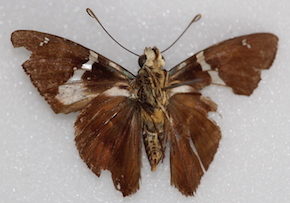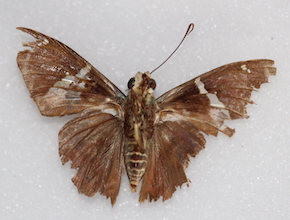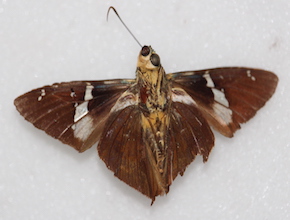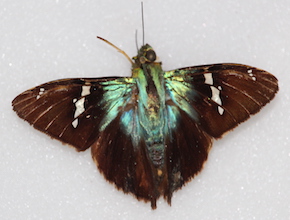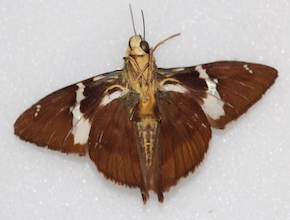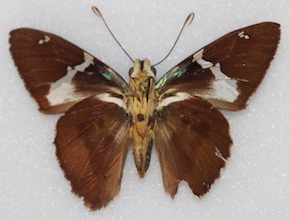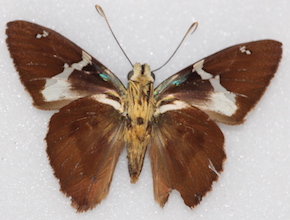Two-barred flasher
Wing span: 4.8–6.1 cm (Lotts & Naberhaus, 2017)
Identification: The wings are brown with the upperside of the body and basal part of the wings being iridescent blue. Each forewing has a white band and small white spots near the apex (Lotts & Naberhaus, 2017). The central band is dislocated at vein 3, and spot 2 is not conjoined to the cell spot (Warren et al., 2013). Males usually have three apical spots and females have four. The forewings of males have a costal fold containing scent scales. The underside of the forewings has an iridescent blue patch starting from the base and extending along the costal margin up to the postdiscal section. The underside of the hindwings has a white basal streak extending to the discal section of the costal margin. The head and thorax are yellow below (Lotts & Naberhaus, 2017).
Variation: A patch of white may be visible near the iridescent blue patch on the underside of the forewings in some specimens. The spot in space 3 on the central band of the forewings may be present or absent in some subspecies. Additionally, a black streak at the extreme base of the hindwing underside may be present or absent in some subspecies near the white basal streak. A white suffusion may also be absent or fairly well developed in space 1b on the underside of the forewings (Warren et al., 2013).
Behaviour: Adults tend to rest upside down under large leaves. Males like to perch in sunlit openings to wait for females (Lotts & Naberhaus, 2017).
Habitat:
Larval food plant: Karwinskia humboldtiana (Warren et al., 2013)
Adult food: Bird droppings, flower nectar (Lotts & Naberhaus, 2017) of species such as Ageratum
Reported from: CEIBA (Region 4), Enachu Creek, Mt. Ayanganna & Oko Mts. (Region 7), TropenBos Forest Reserve (Region 8), Acarai Mts., Kanuku Mts., Nappi Creek & Rewa Eco-Lodge (Region 9)



